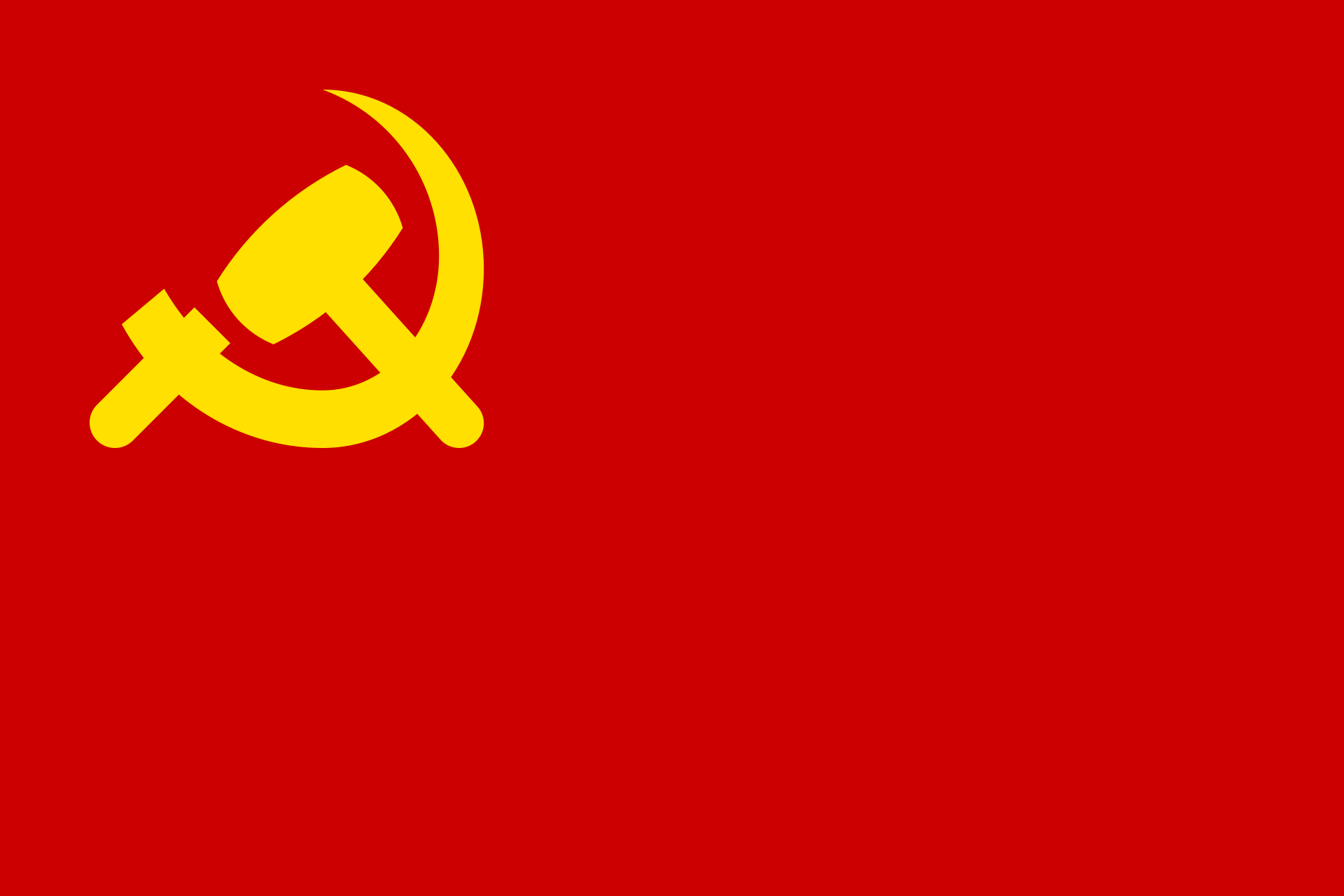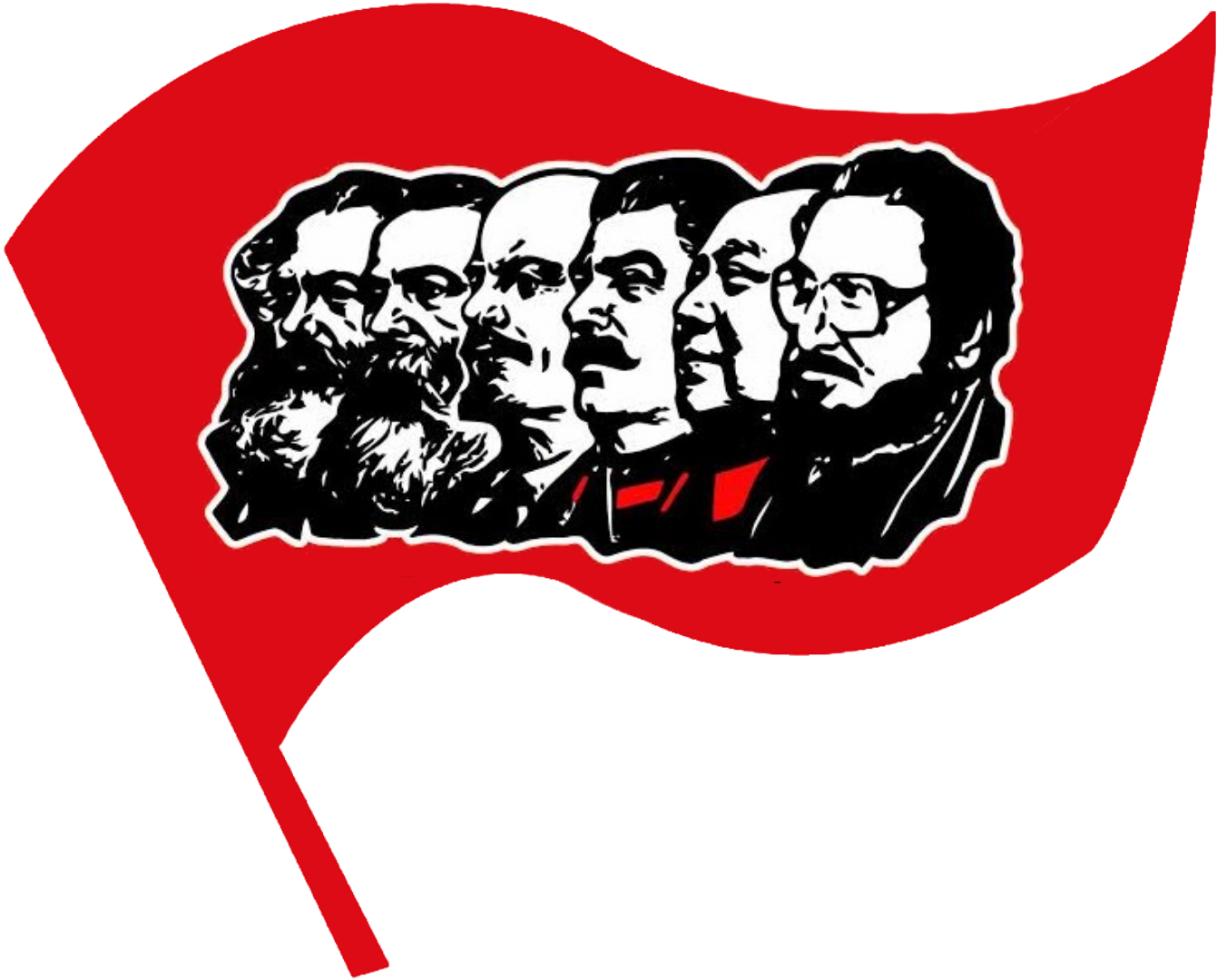More languages
More actions
Peruvian Communist Party Partido Comunista del Perú | |
|---|---|
 Flag of the PCP | |
| Abbreviation | PCP |
| Founder | Abimael Guzmán |
| Founded | 1969 |
| Split from | Peruvian Communist Party (Marxist–Leninist) |
| Succeeded by | Militarized Communist Party of Peru |
| International affiliation | Revolutionary Internationalist Movement |
| Slogan | ¡Viva la Guerra Popular! ¡Guerra Popular hasta el comunismo! ("Long live the People's War! People's War until communism!") |
| Part of a series on |
| Maoism |
|---|
 |
| Part of a series on |
| Communist parties |
|---|
The Communist Party of Peru – Shining Path (CPP-SP),[a] more commonly known as the Shining Path, is a Marxist-Leninist-Maoist party and guerrilla organization in Peru founded in 1969 after an organizational split with the Communist Party of Peru – Red Flag.
Using its militant wing, the People's Guerrilla Army, the PCP has been engaged in a Protracted People's War against the bourgeois government of Peru since 1980, with the intention of creating of Socialist state and ultimately reaching Communism.[1]
The PCP rejected all self-proclaimed Socialist states at that time, viewing them as revisionist and having restored Capitalism, and firmly based its ideology on the teaching of Mao Zedong, with which they developed his ideas into Marxism-Lenin-Maoism, a universal form of Mao Zedong Thought.[2]
The party, founded and led by Abimael Guzmán, has recived criticism for its large centralization of its leadership,[3] and alleged crimes it had commited during the People's War against the brutal semi-Fascist government that had existed.[4][5]
History
The Shining Path began to organize between 1968 and 1970 when Abimael Guzmán and his followers split from the Maoist organization Communist Party of Peru – Red Flag after conflicts between the center and periphery of the party.[6] At the time, Guzmán was a professor of philosophy at the University of San Cristóbal de Huamanga since 1962 in the city of Ayacucho, then a remote city neglected by the Peruvian state.[7]
During the early 70's, the party began participate in the student movements of Peru, achieving support in the university Guzmán taught and in the National University of Engineering, but having insignificant support elsewhere.[8] At the time, the Shining Path was building a party apparatus, achieving considerable success in student circles. Party cells and regional committees were established throughout Peru, with a concentration of cadres in Central Sierra and Lima.[9] The party constantly engaged in political campaigns against other organizations of the revolutionary left.[10]
Between 1977 and 1980, the party began to re-structure itself and create a political and military apparatus capable of engaging in armed struggle. As part of this effort, the student cadres, along with urban militants, were withdrawn from universities in 1977 and sent into the countryside in 1978, establishing training camps in a few rural districts.[11] During this period of re-structuring, the party increased its members by attracting members of other revolutionary organizations, and even infiltrating them.[12]
List of alleged crimes
References
- ↑ "Eternal Glory to Chairman Gonzalo" (2021-9-25). Tjen Folket Media. Retrieved 2022-10-16.
- ↑ Deng's Dogs
- ↑ Peru’s ruling elite unleashes anti-communist tirade after Shining Path leader’s death
- ↑ BJ Murphy (2010-8-1). "The Shining Path Revealed: Behind the Lies & Propaganda" The prison gates are open. Retrieved 2022-10-16.
- ↑ Silvio Rendon (2019). A truth commission did not tell the truth: A rejoinder to Manrique-Vallier and Ball. [PDF] SAGE journals. doi: 10.1177/2053168019840972 [HUB]
- ↑ “By 1966, Guzman and his followers at Huamanga were part of the Maoist Partido Comunista del Peru- Bandera Roja (PCP-BR, Communist Party of Peru-Red Flag). The relationship between center and periphery in the party was an uneasy one, nevertheless, with the withdrawal/expulsion of the "country bumpkins" of Huamanga occurring between 1968 and 1970. It was at this time that the Guzman faction adopted the title of Partido Comunista del Peru en el Sendero Luminoso de Mariátegui (Communist Party of Peru in the Shining Path of Mariátegui), known to outsiders as Sendero Luminoso.”
David Scott Palmer (1986). Rebellion in Rural Peru: The Origins and Evolution of Sendero Luminoso. Comparative Politics, vol.18, no. 2. doi: 10.2307/421840 [HUB] - ↑ “The University of San Cristóbal de Huamanga, where Abimael Guzmán taught for 12 years, starting in 1962, is located in what was then a remote capital, Ayacucho, connected to the outside world by a one-lane road in the indigenous heartland of the Peruvian sierra.”
David Scott Palmer (2016). Shining Path of Peru: a product of Latin American university radicalism? (p. 7). Journal of Security Studies. [PDF] Ankara: Turkish National Police Academy. - ↑ “At this stage the Sendero Luminoso group were concen- trating their organizational efforts in the student movement, with the Party's name originating from their control of the Frente Estudiantil Revolucionario por el Sendero Luminoso Mariátegui de (the 'Revolutionary Student Front for the Shining Path of Mariátegui'). One of its most important bases was the University of Huamanga located in the small sierran town of Ayacucho, where Abimael Guzmán taught philosophy. Other educational establishments where the Frente Estudiantil had support were the Universidad National de Ingenería (National Engineering University - UNI) and the University of San Martin de Porres in Lima. Other important universities in the capital, such as San Marcos and La Católica, were dominated by Patria Roja, Vanguardia Revolucionaria and other left-wing organizations between 1970 and 1979, with Sendero Luminoso having but a relatively insignificant presence.”
Lewis Taylor (1983). Maoism in the Andes: Sendero Luminoso and the contemporary guerrilla movement in Peru (p. 9). Liverpool: University of Liverpool. [LG] - ↑ “The first phase of Sendero Luminoso's existence covered the years 1970 to 1977. During this period they began to construct a party apparatus, achieving a surprising ; degree of success, especially in student circles. Cells were formed throughout Peru, as were regional committees:, with the main concentration of cadres (then and now) being found in the Central Sierra and Lima. Quickly gaining a reputa- tion as extreme dogmatists, Sendero's members were regarded somewhat dismissively by the other revolutionary left groups as 'nutters'.”
Lewis Taylor (1983). Maoism in the Andes: Sendero Luminoso and the contemporary guerrilla movement in Peru (pp. 9-10). Liverpool: University of Liverpool. [LG] - ↑ “For its part, Sendero launched vilification campaigns against the rest of the revolutionary left that were so intense that they even surprised many activists with long experience of working in a political environment not noted for gentlemanly behaviour.”
Lewis Taylor (1983). Maoism in the Andes: Sendero Luminoso and the contemporary guerrilla movement in Peru (p. 10). Liverpool: University of Liverpool. [LG] - ↑ “The second phase in Sendero Luminoso's development began in 1977 and lasted until early 1980. Those cadres who were deemed responsible for the organization's over-attention to purely educational matters and its failure to become involved in practical politics between 1970 and 1977, were censored ( they were mostly to be found in the Lima section of the Party), and the new central task was declared to be 'reconstructing the Party'. In effect this meant the creation of a political and military apparatus that would be Capable of waging armed struggle. By late 1976 Sendero Luminoso had increased its influence in the student movement, especially in the Central Andes and Lima. As part of this policy of 'reconstructing the Party', a majority of these student cadres were withdrawn from the universities in 1977 and 1978 and sent into the countryside. So too were a number of the non-student activists who lived in urban areas. Training camps were established in certain rural districts (such as the puna around Julcamarca in Ayacucho)”
Lewis Taylor (1983). Maoism in the Andes: Sendero Luminoso and the contemporary guerrilla movement in Peru (pp. 10-11). Liverpool: University of Liverpool. [LG] - ↑ “The years 1977 to 1980 are characterized by the careful contruction of a national organization (but still with a significant majority of the membership located in the Central Sierra and Lima). This process was aided by attracting members from other left groups. In 1976 a split occurred in Vanguardia Revolucionaria, with approximately 25 to 10% of the organization leaving to establish a new party called Vanguardia Revolucionaria – Proletaria Comunista (VR-PC). [...] VR-PC adopted an ultra-left position with respect to the 1978 Constituent Assembly elections, failing to participate on the same grounds as Sendero, but only to undertake later an abrupt volte-face in 1979-1980. This, in additon to other rather strange positions taken up by the organization in these years, created a high degree of confusion and disenchantment among YR-PC's membership. Into this situation stepped Sendero Luminoso, infiltrating VR-PC in 1978 and later leaving, taking with them many of V8-PC's cadres, including several of their most important and experienced peasant militants in 1979 (e.g. Felix Calderón from Cajamarca, among others). Similarly, in 1979 the Puka LLacta (Tierra Raja in Quechua) faction broke off from Patria Raja to join Sendero Luminoso. Puka LLacta's membership in the main consisted of miners in the departments of Junín and Pasco.”
Lewis Taylor (1983). Maoism in the Andes: Sendero Luminoso and the contemporary guerrilla movement in Peru (p. 11). Liverpool: University of Liverpool. [LG] - ↑ 13.0 13.1 The Shining Path of Peru
- ↑ Deng's Dogs
- ↑ April 3, 1983 | Massacre of peasants in Peru
- ↑ The Shining Path controversies that spurred Peru’s gov’t shake-up
- ↑ Interview with Chairman Gonzalo
- ↑ Three dead, homes and school damaged in rebel attack
Notes
- ↑ Spanish: Partido Comunista del Perú – Sendero Luminoso (PCP-SL)
